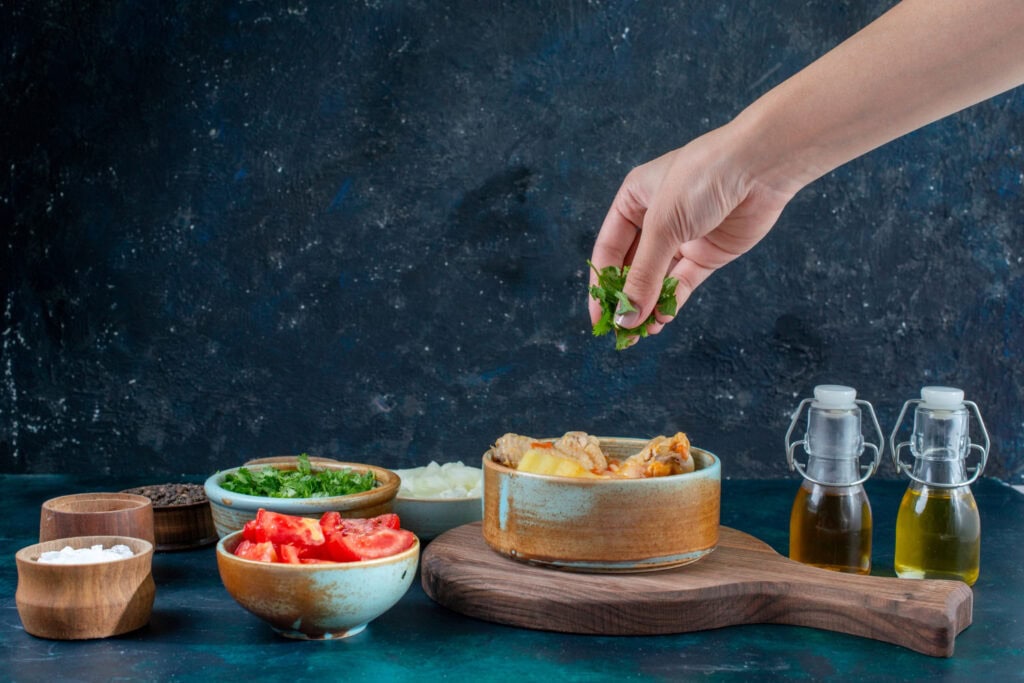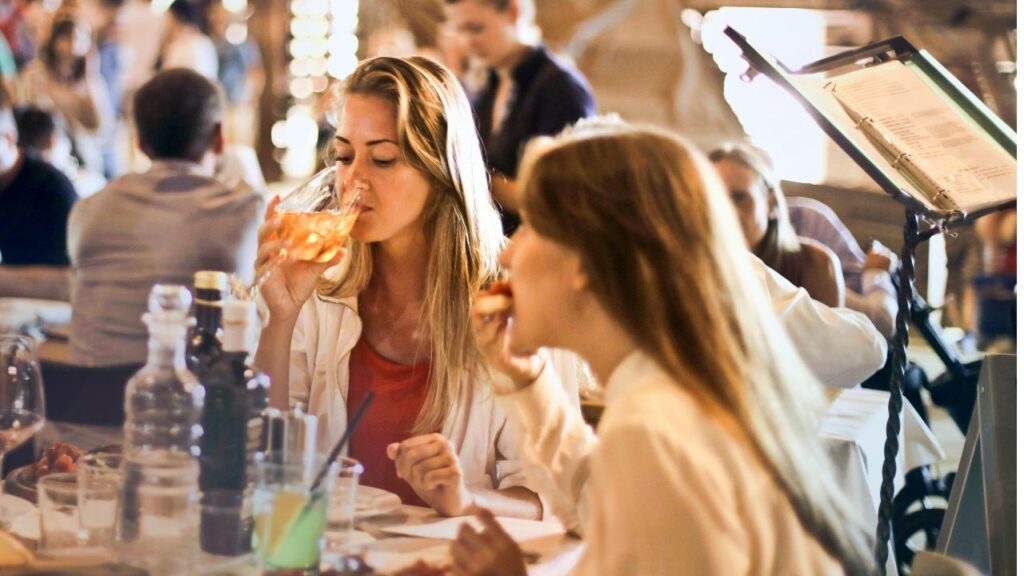We may earn money or products from the companies mentioned in this post. This means if you click on the link and purchase the item, I will receive a small commission at no extra cost to you ... you're just helping re-supply our family's travel fund.

Lunch has always been more than a meal in America.
It reflects how people work, socialize, and balance their time.
Three generations ago, lunch was predictable and shared.
Today, it is fast, personal, and often solitary.
The journey from company cafeterias to modern food courts tells a quiet story about how Americans live and what they value.
The Age of the Company Cafeteria
In the mid-20th century, lunch was part of the workday’s rhythm.
Factories, schools, and offices ran on schedules that included a real break, and cafeterias were built to feed hundreds at once.
These were practical, no-nonsense spaces.
You lined up with a tray, chose from a few hot dishes, and sat down with the same coworkers every day.
Menus rarely changed. Meatloaf, mashed potatoes, and pie made regular appearances.
But what the food lacked in excitement, it made up for in routine and connection.
Cafeterias were places where colleagues talked, relaxed, and built community. Lunch was predictable, but it was shared.
The Rise of Fast Food and Choice

By the 1970s, predictability started to lose its appeal.
A new generation wanted speed, flavor, and freedom to choose.
Fast food chains like McDonald’s, Wendy’s, and Burger King answered that call.
They offered quick meals, familiar menus, and the excitement of dining out without formality.
Lunch became more personal and less social.
The shared tray gave way to the individual order, and the cafeteria table was replaced by the drive-thru window.
The American lunch break was no longer about slowing down. It was about getting ahead.
The Food Court Revolution
By the 1980s, the food court had become the country’s new lunchtime symbol.
Malls were booming, and the food court reflected the era’s obsession with variety and choice.
It was a democratic space where you could order Chinese food, a slice of pizza, and frozen yogurt all under the same roof.
Families gathered, teenagers lingered, and workers escaped for a quick bite between errands.
It was noisy, bright, and endlessly diverse.
The food court became the modern cafeteria for a consumer-driven America.
It captured what the country loved most at the time: convenience, choice, and a little bit of spectacle.
The Grab and Go Generation

By the 2000s, time itself had become the enemy.
Technology blurred the line between work and rest, and lunch was one of the first casualties.
People began eating at desks, in cars, or between meetings.
Fast-casual chains, meal delivery apps, and smoothie bars promised nourishment without slowing you down.
Lunch stopped being a break and became another task to complete.
Efficiency replaced conversation, and convenience replaced community.
For the first time, many Americans were eating alone by choice.
Health, Identity, and the New Lunch Culture
Today, lunch has become a reflection of identity.
What people eat says as much about their values as their taste.
Plant-based burgers share space with comfort food.
Vegan, gluten-free, and high-protein options sit side by side, reflecting a culture that prizes customization.
Lunch has turned into a statement of lifestyle and belonging.
For some, it’s about wellness. For others, it’s nostalgia for a time when food was simple and shared.
Every bite has meaning now, even when eaten in a rush.
The Return of the Communal Table
Amid all the speed and solitude, something old is returning.
Food halls are bringing people back together.
These modern spaces combine the energy of food courts with the craft of local cooking.
Independent chefs serve global dishes under one roof, and communal tables invite strangers to sit together again.
They are designed for discovery rather than routine, for connection rather than isolation.
It feels like America, after decades of eating alone, is remembering how good it feels to share a meal.
What Lunch Says About America
Every generation has used lunch to express what matters most.
The cafeteria represented stability and community.
Fast food celebrated independence and speed.
Food courts embodied abundance and freedom of choice.
Today’s lunch culture is about wellness, flexibility, and a search for balance.
Lunch has always been about more than food.
It reflects how people use their time, what they value, and how they connect with others.
From cafeteria trays to delivery apps, the American lunch story is one of constant reinvention.